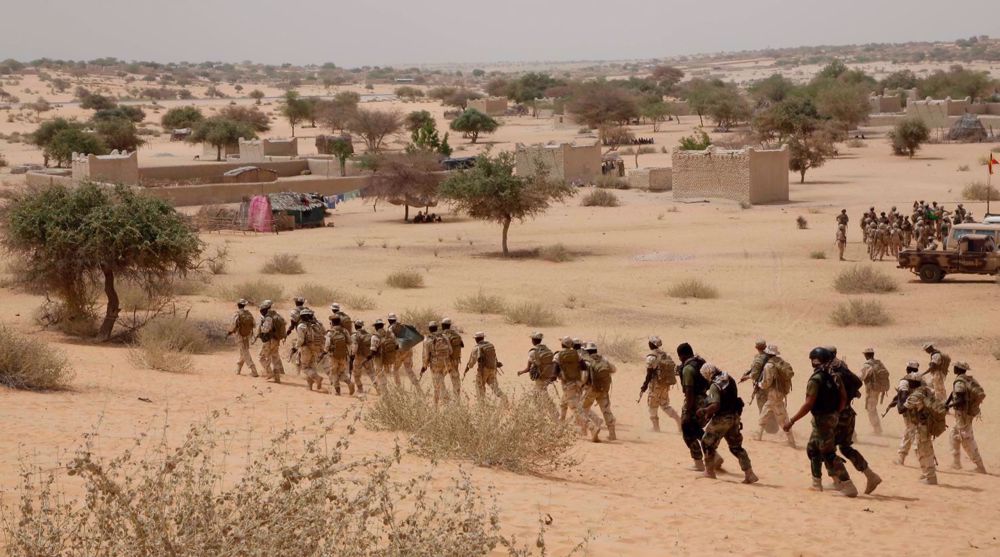Eyeing leverage over Taliban, US ramps up Afghanistan airstrikes to decade-long high
The US military conducted more airstrikes in Afghanistan last year than any other year in the past decade, official data shows, a telltale sign that the administration of US President Donald Trump is stepping up engagement in order to get the upper hand in peace talks with the Taliban.
American fighter jets, bombers, attack aircraft and drones dropped 7,362 weapons on targets across Afghanistan in 2018, according to latest statistics released by the US Air Forces Central Command.
That’s more than the past three years combined and much higher than 2011, the second second-highest year on record, where American aircraft dropped 5,411 weapons.
Overall, American aircraft performed 8,196 sorties in 2018, almost double the number of those carried in 2017, according to the data. Most of the strikes were carried out in September and November.
Airstrike kills 21 civilians in Helmand province
Local officials confirmed late Sunday that US-led airstrikes in the southern province of Helmand had killed at least 21 Afghan civilians on Friday night.
Mohammad Hashim Alkozai, a lawmaker in the Sangin district, where the raids took place, said at least 13 civlians were killed in one attack and right in another.
"Innocent people, women and children, are the only victims of the airstrikes," he noted.
Peace talks with Taliban
Unnamed US military officials confirmed to The New York Times last week that the US had stepped up attacks against the Taliban to give American negotiators leverage in direct peace talks with the group.
The dramatic increase in attacks against the Taliban and the Daesh terror outfit in Afghanistan comes after Trump’s announcement in December that he was going to end the 17-year-long US war there.
Read More:
The Republican president made it clear during his 2016 campaign that he would bring home all the roughly 14,000 US troops from the Afghanistan war, which he back then described as a “total disaster”
In 2017, however, he unveiled plans to prolong the war by sending more troops to Afghanistan, a decision that was seemingly made under the influence of then Defense Secretary James Mattis.
During that period, the Pentagon sent around 3,500 additional troops to Afghanistan and authorized the use of the 10,000 kilogram (21,600-pound) GBU-43 Massive Ordnance Air Blast (MOAB) -- nicknamed "mother of all bombs."
But a year later, Trump made another surprising U-turn by deciding to withdraw from Afghanistan and Syria, a decision that prompted Mattis to resign.
He doubled down on that decision during his State of the Union speech last week, where he also spoke highly of ongoing peace talks with the Taliban.
"In Afghanistan, my administration is holding constructive talks with a number of Afghan groups, including the Taliban," Trump said. "As we make progress in these negotiations, we will be able to reduce our troop presence and focus on counter-terrorism. We do not know whether we will achieve an agreement -- but we do know that after two decades of war, the hour has come to at least try for peace."
Representatives of the US and the Taliban militant group have held several rounds of talks in over the past weeks. The latest round was held last month, and the next round is scheduled for February 25.
Efforts to negotiate a peace deal have been beset by disagreement in recent weeks as leaders of the militant group reject the Kabul government’s offer for direct talks.
Earlier this month, Taliban sidestepped Kabul by holding direct talks with powerful Afghanistan politicians, including former President Hamid Karzai, in Moscow, the Russian capital.
"The Americans agreed to withdraw half of their troops immediately. The withdrawal will start from February 1 and continue until end of April," Abdul Salam Hanefi, deputy head of the Taliban's political office in Qatari capital Doha, told reporters in Moscow.
This is while US negotiator Zalmay Khalilzad has repeatedly stressed that "nothing is agreed until everything is agreed. 'Everything' must include an intra-Afghan dialogue and comprehensive ceasefire."
Earlier this week, the Taliban threw out Afghan President Ashraf Ghani’s offer to open a political office in Kabul, saying the offer was aimed at “harming the peace efforts.” The group says it is looking forward to get global recognition.
Acting US Defense Secretary Patrick Shanahan met with Ghani during a surprise visit to Kabul on Monday to "discuss a broad range of defense issues," according to the Pentagon.
"Both sides said that the peace process and the fight against terrorism will continue, and the military and security alliance between Afghanistan and US will continue until peace is achieved," Ghani’s office said.
Haniyeh: Justice demands arrest of Netanyahu, his terrorist cabinet
VIDEO | Israeli war crimes in Gaza
Syrian president, Bahrain FM discuss expansion of bilateral relations
Sudan demands UNSC emergency meeting on UAE ‘aggression’
VIDEO | Press TV's news headlines
17,000 children left unaccompanied in Gaza amid Israel’s war: UN agency
Iraq’s lawmakers call for expulsion of US ambassador
Hundreds of students arrested as Gaza war campus protests spread in US












 This makes it easy to access the Press TV website
This makes it easy to access the Press TV website